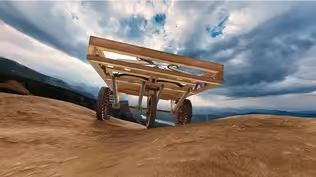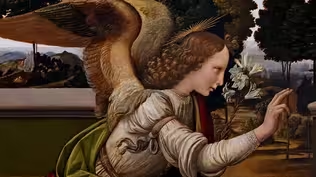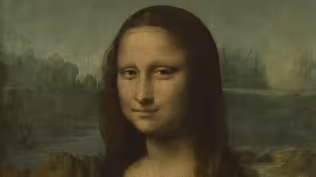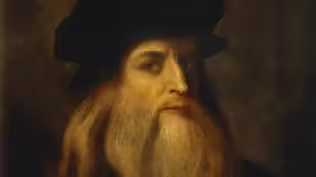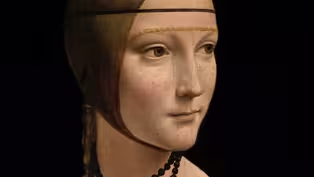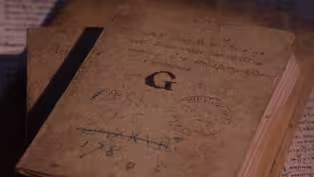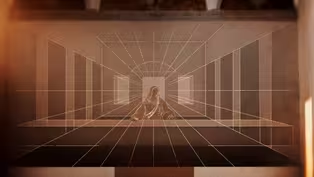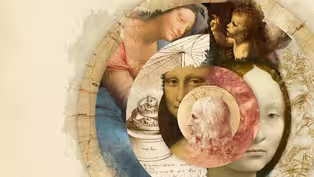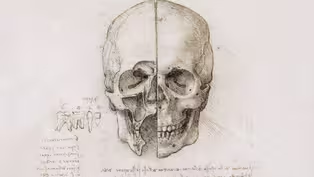
Early Works of Leonardo da Vinci
Clip: 11/18/2024 | 8m 40sVideo has Closed Captions
Leonardo da Vinci’s first commissions are a great way to explore his early painting techniques.
As a young artist, Leonardo da Vinci helped advance the art of single-point linear perspective, which brought the illusion of depth to a two-dimensional work. Two of his first independent works as a professional artist were the Annunciation followed by a commission to paint a portrait of Ginevra de’ Benci. This portrait highlights his early mastery of painting techniques like sfumato and spolvero.
Problems playing video? | Closed Captioning Feedback
Problems playing video? | Closed Captioning Feedback
Corporate funding for LEONARDO da VINCI was provided by Bank of America. Major funding was provided by the Corporation for Public Broadcasting, and by The Better Angels Society and by...

Early Works of Leonardo da Vinci
Clip: 11/18/2024 | 8m 40sVideo has Closed Captions
As a young artist, Leonardo da Vinci helped advance the art of single-point linear perspective, which brought the illusion of depth to a two-dimensional work. Two of his first independent works as a professional artist were the Annunciation followed by a commission to paint a portrait of Ginevra de’ Benci. This portrait highlights his early mastery of painting techniques like sfumato and spolvero.
Problems playing video? | Closed Captioning Feedback
How to Watch Leonardo da Vinci
Leonardo da Vinci is available to stream on pbs.org and the free PBS App, available on iPhone, Apple TV, Android TV, Android smartphones, Amazon Fire TV, Amazon Fire Tablet, Roku, Samsung Smart TV, and Vizio.
Buy Now
Providing Support for PBS.org
Learn Moreabout PBS online sponsorshipMan as Leonardo: The art of perspective is such that it makes what is flat appear in relief and what is in relief appear flat.
♪ Verdon: Part of Leonardo's heritage was the revolutionary invention of single-point linear perspective, so a young man learning art in Florence in the 1460s, as Leonardo would have done, he understood that he had to be a complete master of that.
Narrator: Single-point linear perspective, a method of bringing the illusion of depth to a two-dimensional work, had been devised by Brunelleschi, but it was the architect Leon Battista Alberti who had enshrined it for Renaissance artists in his treatise "Della Pittura."
Man: Perspective was very important to the painters.
That's basically how things recede into space and the vanishing point that parallel lines seem to go to.
Musicians had mathematical theories of harmony, and perspective was rather like that for painters.
They had a theory, so he began to develop an interest not just in the mathematics of organizing space in pictures, but also in how the eye works and how slippery it is.
He's the first of the theorists in painting who realizes that the business of seeing is very complicated.
♪ Man as Leonardo: All objects transmit their image to the eye by a pyramid of lines which start from the edges of an object's surface and, converging from a distance, meet in a single point... and I will show that this point is situated in the eye, which is the universal judge of all objects.
♪ Narrator: In 1472, at the age of 20, Leonardo joined a painter's guild whose members were among the most talented artists in Florence-- Filippino Lippi, Domenico Ghirlandaio, Pietro Perugino, and Sandro Botticelli.
Though Leonardo remained a part of Verrocchio's workshop, he was now a dipintore, a professional painter, able to receive his own commissions.
♪ Florentine artists were frequently hired by churches and the city's wealthiest families to paint the Bible's most popular subjects-- the Madonna and Child, the Adoration of the Magi, the Crucifixion.
Another frequently depicted scene was the Annunciation, the moment in which the angel Gabriel descends from heaven to proclaim to the Virgin Mary that she will give birth to the Son of God.
It would be the focus of one of Leonardo's first independent works.
♪ Though he borrowed freely in technique from Verrocchio, Leonardo's "Annunciation" revealed his grasp of perspective, his deftness with light and shadow, and his devotion to nature.
Vecce, speaking Italian: ♪ Gopnik: He's one of those people who lives in his own head.
We meet those people in life, and we recognize that they live on a planet other than our own.
♪ There are very, very few times in history when what you did when you had that kind of restless, inquiring, creative mind was to paint pictures.
Renaissance Italy was perhaps the only place and time when that was so, and we're blessed that it was.
♪ ♪ Narrator: Leonardo received another commission-- to paint a portrait of the young poet Ginevra de' Benci, the daughter of a wealthy, well-connected banking family who had occasional dealings with Leonardo's father.
To look at the "Ginevra de' Benci" is probably one of the great ways to understand Leonardo's early painting technique.
It is a very deliberated, very protracted process.
The painting is done on a very thin poplar wood panel, and it has a priming that is gesso.
Leonardo began by doing the cartoon, a full-scale drawing on paper.
♪ He pricked the outlines and rubbed with a pouncing bag while the panel was underneath, a technique we call spolvero.
♪ The oil medium, it's basically linseed oil and pigments.
♪ He applied in the thinnest veils what we call the glazes, or the velature in Italian.
♪ Layer by infinitesimal layer, he's able to calibrate the tonal transitions that permit him to explore the sfumato technique where you blend the gradations in such a way that they seem to be the manner of smoke.
♪ Narrator: In a playful reference to Ginevra's name, Leonardo surrounded her with juniper branches, ginepro in Italian.
Borgo, speaking Italian: ♪ Bambach: We can already see how intensely Leonardo believes that the motions of the mind, the motions of the soul-- so the moti dell'animo, e moti dell'anima-- show through this almost inscrutable gaze that she holds, and there is a connectivity with the viewer that gives it this tremendous power.
♪
How Leonardo da Vinci Created Narratives in His Paintings
Video has Closed Captions
Clip: 11/18/2024 | 6m 37s | Leonardo da Vinci paints The Virgin on the Rocks and the portrait Lady with an Ermine. (6m 37s)
Video has Closed Captions
Clip: 11/18/2024 | 8m | Leonardo da Vinci’s notebooks provide unique insight into his mind, knowledge and discoveries. (8m)
Leonardo da Vinci’s The Last Supper
Video has Closed Captions
Clip: 11/18/2024 | 12m 8s | In the early 1490s, Leonardo da Vinci tackled his most ambitious work yet – The Last Supper. (12m 8s)
Video has Closed Captions
Preview: 11/18/2024 | 1m 10s | Explore one of humankind’s most curious and innovative minds. (1m 10s)
The Vitruvian Man and Leonardo da Vinci's Anatomical Studies
Video has Closed Captions
Clip: 11/18/2024 | 8m 2s | Leonardo da Vinci studied anatomy to gain a deeper knowledge of how the body worked. (8m 2s)
Providing Support for PBS.org
Learn Moreabout PBS online sponsorshipSupport for PBS provided by:
Corporate funding for LEONARDO da VINCI was provided by Bank of America. Major funding was provided by the Corporation for Public Broadcasting, and by The Better Angels Society and by...

